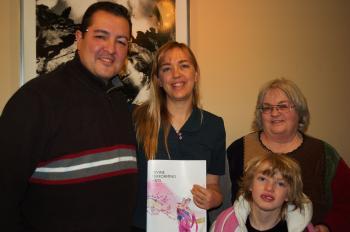Part II—Animals and Buddhism
[Please see Part One: Makhadeva]
The teachings of the Buddha have contained both doctrine and stories. Buddhism has traditionally been taught by monks in societies that have been illiterate. Most people could not read the scriptures. Not everyone could comprehend subtle intellectual concepts. Therefore, the Buddha used stories to communicate spiritual truths.
The Jataka Tales are part of this tradition. They are tales told by the Buddha about his previous lives. In these narratives, the Buddha is always referred to as the Bodhisattva (a spiritual practitioner who has not yet reached perfection).
The literature of early Buddhism is always illuminating. The ideas found in it are quite contemporary. Buddhist doctrine did not confine itself to the notion of enlightenment; it often dealt with social issues. In the Buddha’s time animal sacrifice was quite common. He opposed the practice, teaching that those who killed animals would accumulate karma for their actions. They would have to pay it back.
Today, the idea of animal rights is well established. Those who campaign for animal rights, however, may not believe in karma. Their concern is often simply to prevent, or at least reduce, cruelty to animals.
We use animals, for our profit and our pleasure. Australia exports millions of sheep to the Muslim world to be slaughtered for Ramadan. Activists are rightly concerned about the manner in which the sheep are transported. They do not like the fact that the sheep are killed in a brutal fashion once they reach their destination.
The response to the manner is which we treat animals is interesting. There are people who are vegetarian for political reasons. Some are vegan. The shift in the public mind has led to supermarkets that sell free range eggs and free range chicken.
The world is, of course, increasingly committed to animal rights as it remains committed to human rights. There is much greater awareness now that the whole planet is interlinked, and that what we do to it, comes back to us.
It is quite possible then, that in a subtle way, we are moving back towards the idea of karma.
The Goat that Laughed & Cried
(It is important to note that in his past lives, the Buddha is known as the Boddhisattva)
The Buddha was assembled along with his disciples at a time when many people were sacrificing animals in a Feast for the Dead. They believed the animals had to be killed in order to feed their dead ancestors.
The monks asked Buddha if he thought these sacrifices did any good. He replied that they did not. He said one accumulated karma by doing this and one suffers for it later. Then, he told the following story:
“During the reign of Brahmadatta, in the city of Benares, there lived a Brahmin. One day, he told two of his disciples to take his goat down to the river and sacrifice it for The Feast of the Dead. His sons bathed and groomed the animal and began to lead the goat down to the river. At that moment, the goat remembered the deeds it had committed in its past lives. It became overjoyed that on that day it would be freed from its misery. In its happiness, it burst out laughing. A little later, when it realized that the Brahmin would pay a price for killing it, it was moved to compassion and started crying. The disciples were amazed.
They asked the goat, “Tell us why you laughed earlier and why you cry now.”
The goat replied, “Ask me this question in front of your master.”
The Brahmin’s sons led the goat back to their master and told him what had happened. After hearing the story, the Brahmin asked the goat why it had cried and why it had wept.
On being asked that question, the goat remembered its past lives very clearly.
It replied, “In the past, O Brahmin, I too, was like you, well-versed in the scriptures. In order to make an offering for the Feast of the Dead, I sacrificed a goat. For the karma I accumulated from sacrificing that goat, I have had my head cut off lifetime after lifetime. So far, my head has been cut off 499 times. This will be my last time and after this I shall have repaid my karma for that deed. I laughed because I was happy at the prospect that I would at last be set free from this crime. I cried because I felt great compassion for you. I knew that you too would have your head cut off 500 times.”
When the Brahmin heard this, he was greatly moved.
“Do not fear, goat,” he said. “I shall not kill you.”
“What’s this you say, Brahmin?” cried the goat. “Your protection is too weak. I am destined to die today and the force of my karma is much greater than the force of your protection.”
The Brahmin ordered his disciples to set the goat free and make sure that no one hurt it wherever it wandered.
As soon as the goat was set free, it stretched out its neck to eat the leaves of a bush growing near a rock. At that moment, a bolt of lightning struck the rock. A huge piece of the rock broke off and hit the goat on its outstretched neck. Its head was severed instantly. People came running and gathered round to stare.
In those days, the Bodhisattva was a Tree-Fairy. And now he floated cross-legged above the people. He thought, “If only these people knew the truth about evil-doing, perhaps they would stop killing.” In a honeyed voice, he began to give the people a teaching on karma and reincarnation.
When those people heard the teaching, their inner wisdom awakened. They gave up animal sacrifice and spent the rest of their lives in acts of charity. When they died, they went up to Heaven.
When the Buddha finished the story, he told the monks, “In that life, O monks, I was the Tree-Fairy.”
From the Translated Jataka:
“If folk but knew the penalty would be
Birth unto sorrow, living things would cease
From taking life. Stern is the slayer’s doom.”
Translation by Robert Chalmers, courtesy of www.sacred-texts.com.



Friends Read Free